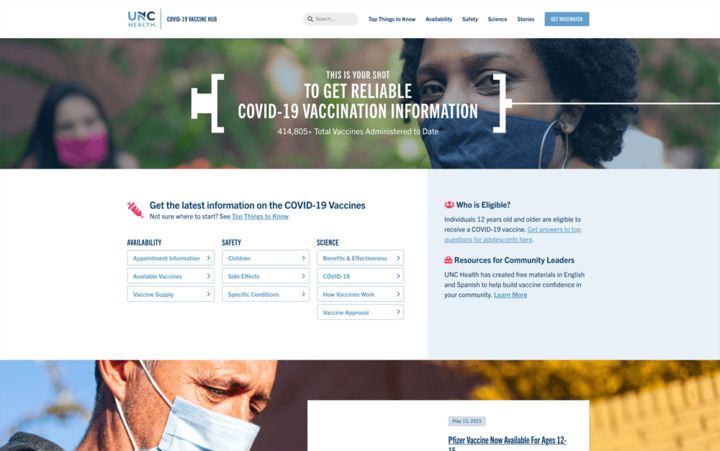News & Insights
News & Insights
By Emily Kubis
We love a good story. Stories inspire and entertain, but mostly, stories connect us. Humans have always connected to one another through telling and listening to stories, and, in marketing, content connects our brands to our audiences in the same ancient, powerful way.
To deepen our understanding of that connection, we’ve explored how content picks up where awareness and affinity leave off, building enduring relationships founded on data-backed understanding. With these approaches, content extends conversations with consumers through a series of connections across the marketing funnel.
Content that creates authentic connections with audiences is guided by five principles:
- Move beyond awareness: Awareness is step one in building relationships. Content is steps two to 1000.
- Personalize it: The more personalized content is, the more effective it will be.
- Make it useful: Solve problems before you sell.
- Influence the influencers: Content for – and from – your audience’s most trusted voices.
- Optimize, optimize, optimize: An “always-on” approach adapts to each encounter, offering a path from one connection point to the next.
Together, these principles form content in which each experience a consumer has with your organization builds on the last. Here are examples of how that comes to life for health brands.
Move Beyond Awareness
Awareness is critical. But we can’t stop there. Between brand awareness and patient loyalty, dozens of touch points and engagement opportunities exist for marketers to anticipate and address through content.
For example, The North Carolina Healthcare Association (NCHA) wanted to build trust between hospitals and health systems and the communities they serve. The association’s goal was to measurably strengthen the faith that people in North Carolina have in their hospitals – not only recognizing the value of hospitals in their lives but becoming active supporters of healthcare workers and advocates for healthcare in legislative efforts. To build that trust, North Carolinians’ concerns about healthcare — its costs, its complexity — had to be acknowledged.

A brand awareness campaign wouldn’t foster the trust NCHA needed— only an extended conversation with their local communities would work. Through audience-first storytelling and a virtual town hall series, NCHA’s content tells the stories of the humans in healthcare. A content-rich hub enables emotional connections between providers and their patients, giving the public an opportunity to engage in open, ongoing conversations with hospital leaders across the state.
Personalize It
People are multi-dimensional and so is great content. Truly personalized content is as nuanced as the person reading it and should be delivered by authentic voices, people your audience trust—a central truth in our work with Louisiana-based Franciscan Missionaries of Our Lady Health System (FMOLHS).
When FMOLHS, the largest health system in Louisiana, decided to improve the health of their state, it took a personalized, content-driven route.
We started with awareness, launching the program, Health Esteem, in traditional mass media: broadcast, print, and OOH. To build on this awareness, FMOLHS connected with their audience in social media channels to change their behavior.

Local lifestyle influencers—a local BBQ king, a fashion blogger, and a health and wellness influencer, among others—shared branded content across Instagram and Facebook to encourage people to take steps toward better health in the interests and hobbies of their day-to-day lives: family, food, fitness, self-care, and more. The program also provided a digital tool in which they could set health goals, get more personalized content, and receive daily encouragement to raise their health esteem.
Make It Useful
We’re hard-pressed to think of a patient education effort with higher stakes than the mass COVID-19 vaccination efforts. The need, dire. The effort, unprecedented.
Hospitals quickly discovered they weren’t just vaccinators; they were vaccine educators. The challenge in front of systems like UNC Health was in reaching diverse communities with actionable and credible vaccine communication.
We aren’t talking about commercially insured patients searching the web for “what to expect after knee surgery.” We’re talking about mass outreach to serve everyone. It had to reach the multilingual, the traditionally underserved, and those with deeply held fears about vaccines.

The answer for UNC Health was YourShot.org, an all-things-vaccine microsite and campaign hub that is credible, accessible, and committed to acknowledging a national history of medical misdeeds that foster skepticism.
The site provides actionable steps for every consumer based on where they are in their vaccine journey. Skeptical? Open to learning more? Ready to make an appointment? YourShot.org is mapped with these tracks in mind, allowing consumers to self-solve, subscribe, and learn more from UNC Health every step of the way. The site is also a resource for voices outside the health system, like a local radio DJ, a Spanish-speaking media network, faith groups, volunteer organizations, and social groups, who are critical to UNC Health’s commitment to reaching all audiences.
Influence the Influencers
We’re inherently community-oriented – each of us carries with us our own network of connections, and when we develop relationships with others, these networks overlap, and produce the landscape of friends, acquaintances and peers that shape our understanding of the world.
Sometimes your audience is a conduit to others. To whom does your audience listen? Who do they trust?
This was the idea behind SHIFT, a community “for nurses, by nurses” supported by the Robert Wood Johnson Foundation (RWJF).
While nurses are critical to changing the trajectory of American healthcare, they are often overlooked or dismissed by healthcare decision-makers, including their own leadership, making traditional leadership channels futile. Instead, RWFJ looked to the everyday nurse’s true influencers – their peers. Recognizing that nurses mostly talk to and trust other nurses, SHIFT started a collective conversation fueled by a podcast, website, newsletter and social strategy to connect to busy nurses everywhere they consume content.
Because of its authentic feel, the SHIFT brand been wholeheartedly embraced by nurses. Putting its audience’s needs first is achieving RWJF’s ultimate goal of engaging nurses in building a nationwide culture of health.

Optimize, Optimize, Optimize
The only thing we love more than content is data. Claims data, social listening tools, and audience segmentation analyses can all help us better understand audiences and address their unique needs in content.
But that’s not a one-and-done initiative. Even well-segmented audiences will adapt and change over time – and optimizing content according to data that track their journey is an always-on approach. To continually connect, content must be fluid and agile, mapping alongside consumers’ changing needs and ever-evolving mindsets.
This approach enables health brands to not only understand the context of consumers’ lives but become a part of that context. When we use content to connect, we’re as much a part of well moments as we are sick moments. We are as integrated into our audience’s day-to-day as the influencer they follow on Instagram, their bus driver, their grocery clerk, the neighbor in their fitness class. We’re simply a part of the fabric of their lives.
But optimization is not the end of our content story. In our next connection marketing deep dive, we’ll look at why that level of integration and sophisticated personalization is increasingly an audience expectation – and how content helps us speak to patients where they are already listening.
Related Blog Posts
Stay in Touch
Stay in Touch
Receive our updates, industry news and insights.


